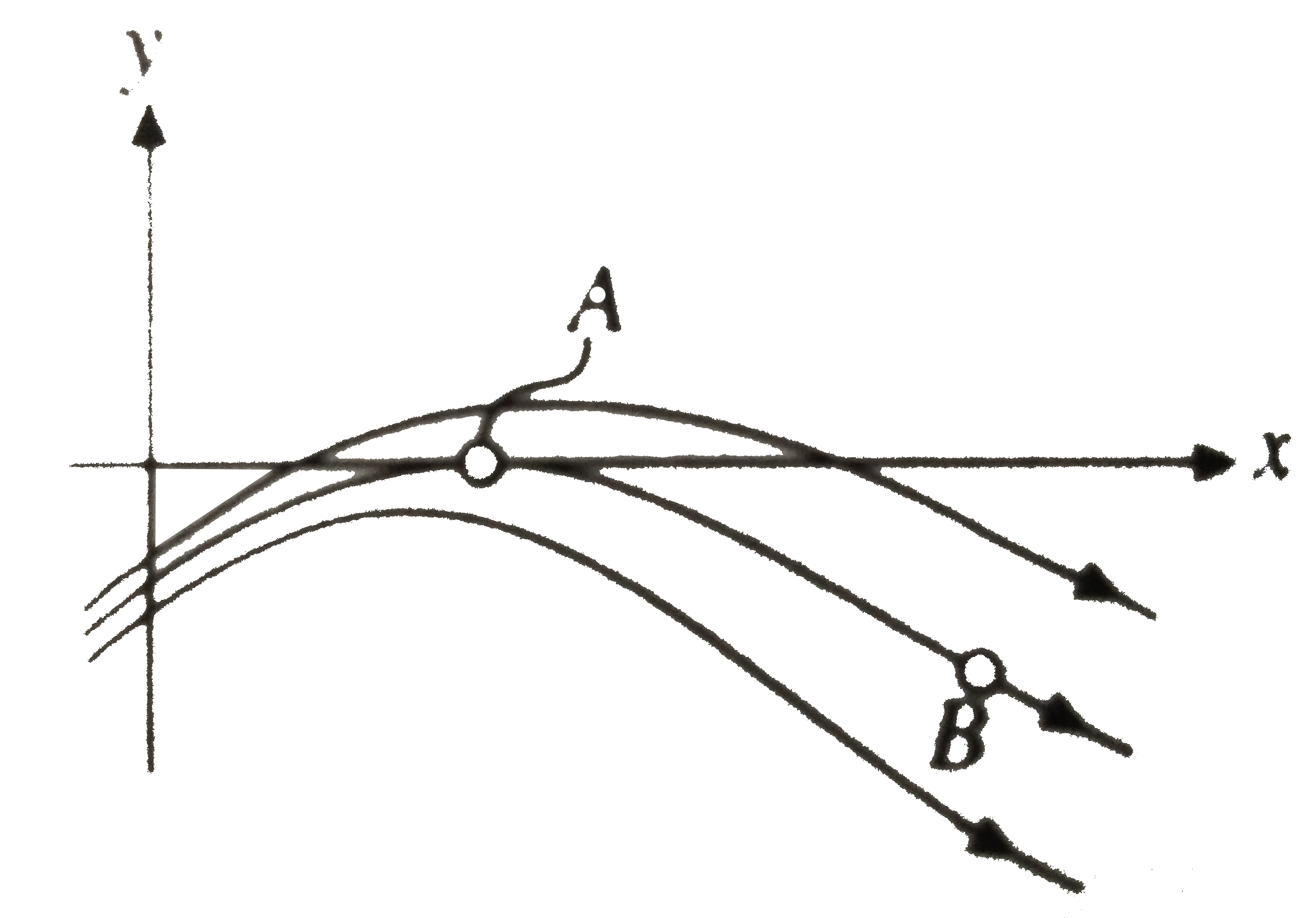(a) Consider an arbitrary electrostatic field configuration. A small test charge is placed at a null point (i.e, where ) of the configuration. Show that the equilibrium of the test charge is necessarily unstable.
(b) Verify this result for the simple configuration of two charges of the same magnitude and sign placed a certain distance apart.
(a) Let the equilibrium of the test charge be stable. If a test charge is in equilibrium and displaced from its position in any direction, then it experiences a restoring force towards a null point, where the electric field is zero. All the field lines near the null point are directed inwards towards the null point. There is a net inward flux of electric field through a closed surface around the null point. According to Gauss’s law, the flux of electric field through a surface, which is not enclosing any charge, is zero. Hence, the equilibrium of the test charge can be stable.
(b) Two charges of same magnitude and same sign are placed at a certain distance. The mid-point of the joining line of the charges is the null point. When a test charged is displaced along the line, it experiences a restoring force. If it is displaced normal to the joining line, then the net force takes it away from the null point. Hence, the charge is unstable because stability of equilibrium requires restoring force in all directions.
Similar Questions
(a) Consider an arbitary electrostatic field configuration. A small test charge is placed at a null point (i.e, where →E=0) of the configuration. Show that the equillibrium of the test charge is necessarlly unsutable.
(b) Verify this result for the simple configuration of two charges of the same magnitude and sign placed a certain distance apart.View SolutionConsider an arbitrary electrostatic field configuration. A small test total is placed at a null point (i.e, where →E=0 ) of the configuration. Show that the equilibrium of the test charge is necessarily unstable.
(b) Verify this result for the simple configuration of two charges of the same magnitude and sign placed a certain distance apart.View Solution
Knowledge Check
- Question 1 - Select One
Two positive point charges of unequal magnitude are placed at a certain distance apart. A small positive test charge is placed at null point, then
AThe test charge is in unstable equilibriumBThe test charge is in stable equilibriumCThe test charge is in neutral equilibriumDThe test charge is not in equilibrium - Question 2 - Select One
A positive charge q0 placed at a point P near a charged of metal sphere experience a force of repulsion of magnitude F, the electric field E of the charge metal, charge at P is
AFq0B<Fq0C>Fq0DF - Question 3 - Select One
Two charges e and 3e are placed at a distance r. The distance of the point where the electric field intensity will be zero is
Ar(1+√3) from 3e chargeBr(1+√3) from e chargeCr(1−√3) from 3e chargeDr1+√13 from e charge
A small test charge is released at rest at a point in an electrostatic field configuration. Will it travel along the field line passing through that point ?
View SolutionFig. shows three electric field lines.
(a) What is the direction of the electrostatic force on a positive test charge placed at points A and B ?
(b) At which point A or B, will the acceleration of the test charge be greater if the charge is released?
 .View Solution
.View SolutionTwo charges of 9 and 16 μC are placed 0.7 m apart. Find the position of the null point (A point where the net field is zero) on the line joining the two charges.
View SolutionThe electric field due to point charged at a distance R form it is E. if the same charge is placed on a metallic sphere of Radius R, the electric field on the surface of the sphere will be
View SolutionTwo charge 9e and 3e are placed at a distance r. The distance of the point where the electric field intensity will be zero is :
View Solution

